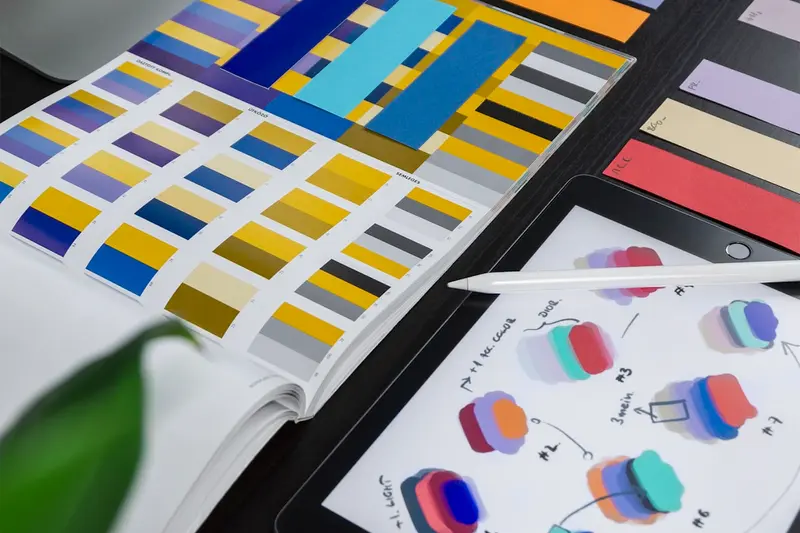I’ll show you how to install desktop publishing tools on Alpine Linux! Desktop publishing (DTP) software lets you create professional documents like magazines, newsletters, brochures, and books. Think of it as the digital version of traditional typesetting and layout design!
🤔 What is Desktop Publishing?
Desktop publishing combines text and graphics to create publication-ready documents. Unlike word processors, DTP software gives you precise control over layout, typography, and design. You can create anything from simple flyers to complex multi-page magazines!
Why use DTP tools?
- Professional layouts
- Precise typography control
- Multi-page document management
- Print-ready output
- Creative freedom
🎯 What You Need
Before starting, you’ll need:
- Alpine Linux with desktop environment
- At least 2GB RAM
- 2GB free disk space
- Internet connection
- About 25 minutes
📋 Step 1: Prepare Your System
First, let’s set up the desktop environment:
# Update packages
apk update
# Install X11 and desktop basics
apk add xorg-server xf86-input-libinput xf86-video-fbdev
# Install a lightweight desktop
apk add xfce4 xfce4-terminal lightdm-gtk-greeter
# Install essential fonts
apk add font-noto font-noto-cjk font-liberation
apk add font-dejavu font-awesome font-terminus
# Install graphics libraries
apk add cairo pango gtk+3.0 librsvg
# Enable display manager
rc-update add lightdm
rc-service lightdm start
# Install package management tools
apk add flatpak📋 Step 2: Install Scribus
Scribus is a powerful open-source DTP application:
# Install Scribus from Alpine repos
apk add scribus
# Install additional Scribus components
apk add scribus-doc ghostscript
# Install PDF tools
apk add poppler-utils pdftk
# Launch Scribus
scribus &
# First time setup
# 1. Choose your UI language
# 2. Set default measurement units
# 3. Configure color management
# 4. Set up document templates📋 Step 3: Install LibreOffice Draw
LibreOffice Draw for simpler layouts:
# Install LibreOffice Draw
apk add libreoffice-draw
# Install language packs
apk add libreoffice-lang-en
# Install additional extensions
apk add libreoffice-extension-writer2latex
# Configure LibreOffice
cat > ~/.config/libreoffice/4/user/registrymodifications.xcu << 'EOF'
<?xml version="1.0" encoding="UTF-8"?>
<oor:items xmlns:oor="http://openoffice.org/2001/registry">
<item oor:path="/org.openoffice.Office.Common/Save/Document">
<prop oor:name="AlwaysCreateBackup" oor:op="fuse">
<value>true</value>
</prop>
</item>
</oor:items>
EOF
# Launch Draw
libreoffice --draw &📋 Step 4: Install Inkscape
For vector graphics and illustrations:
# Install Inkscape
apk add inkscape
# Install Python extensions support
apk add py3-lxml py3-numpy
# Install additional tools
apk add imagemagick potrace
# Configure Inkscape preferences
mkdir -p ~/.config/inkscape
cat > ~/.config/inkscape/preferences.xml << 'EOF'
<?xml version="1.0" encoding="UTF-8" standalone="no"?>
<inkscape
xmlns:sodipodi="http://sodipodi.sourceforge.net/DTD/sodipodi-0.dtd"
xmlns:inkscape="http://www.inkscape.org/namespaces/inkscape">
<group id="tools">
<group id="shapes" style="fill:black;stroke:black"/>
</group>
<group id="options">
<group id="savewindowgeometry" value="1"/>
<group id="defaultunit" value="mm"/>
</group>
</inkscape>
EOF
# Install Inkscape extensions
git clone https://github.com/inkscape/extensions.git ~/.config/inkscape/extensions📋 Step 5: Install Typography Tools
Set up professional fonts and typography:
# Install font management
apk add fontconfig font-manager
# Install professional fonts
apk add texlive-fontsextra
# Create font directories
mkdir -p ~/.local/share/fonts
mkdir -p ~/.config/fontconfig
# Configure font rendering
cat > ~/.config/fontconfig/fonts.conf << 'EOF'
<?xml version="1.0"?>
<!DOCTYPE fontconfig SYSTEM "fonts.dtd">
<fontconfig>
<match target="font">
<edit name="antialias" mode="assign">
<bool>true</bool>
</edit>
<edit name="hinting" mode="assign">
<bool>true</bool>
</edit>
<edit name="hintstyle" mode="assign">
<const>hintslight</const>
</edit>
<edit name="rgba" mode="assign">
<const>rgb</const>
</edit>
</match>
</fontconfig>
EOF
# Update font cache
fc-cache -fv
# Install Google Fonts
git clone https://github.com/google/fonts.git /tmp/google-fonts
find /tmp/google-fonts -name "*.ttf" -exec cp {} ~/.local/share/fonts/ \;
fc-cache -fv📋 Step 6: Install LaTeX for Publishing
For academic and technical publishing:
# Install basic LaTeX
apk add texlive texlive-xetex
# Install LaTeX packages
apk add texlive-latexextra texlive-pictures
apk add texlive-science texlive-publishers
# Install LaTeX editor
apk add texmaker
# Create LaTeX template
mkdir -p ~/Documents/LaTeX
cat > ~/Documents/LaTeX/article-template.tex << 'EOF'
\documentclass[12pt,a4paper]{article}
\usepackage[utf8]{inputenc}
\usepackage{graphicx}
\usepackage{hyperref}
\title{Your Article Title}
\author{Your Name}
\date{\today}
\begin{document}
\maketitle
\begin{abstract}
Your abstract here.
\end{abstract}
\section{Introduction}
Your content here.
\end{document}
EOF
# Install bibliography tools
apk add biber texlive-bibtexextra📋 Step 7: Color Management
Set up professional color management:
# Install color management tools
apk add argyllcms colord
# Install ICC profiles
mkdir -p ~/.local/share/color/icc
cd ~/.local/share/color/icc
# Download standard profiles
wget https://www.color.org/sRGB2014.icc
wget https://www.color.org/AdobeRGB1998.icc
# Configure color management
cat > ~/.config/color.conf << 'EOF'
[ColorManagement]
DefaultRGB=sRGB2014.icc
DefaultCMYK=USWebCoatedSWOP.icc
RenderingIntent=Perceptual
EOF
# Install GIMP for image editing
apk add gimp gimp-lang
# Configure GIMP for print
mkdir -p ~/.config/GIMP/2.10
cat > ~/.config/GIMP/2.10/gimprc << 'EOF'
(color-management-mode display)
(color-management-display-intent relative-colorimetric)
(color-management-simulation-intent perceptual)
EOF📋 Step 8: Create Publishing Workflow
Set up an efficient workflow:
# Create project structure script
cat > ~/bin/new-publication.sh << 'EOF'
#!/bin/sh
# Create new publication project
PROJECT="$1"
if [ -z "$PROJECT" ]; then
echo "Usage: new-publication.sh project-name"
exit 1
fi
# Create directories
mkdir -p "$PROJECT"/{text,images,fonts,layouts,exports}
# Create README
cat > "$PROJECT/README.md" << 'EOREADME'
# Publication Project: $PROJECT
## Structure
- text/ - Text content and articles
- images/ - Images and graphics
- fonts/ - Custom fonts
- layouts/ - Scribus/InDesign files
- exports/ - PDF and print-ready files
## Workflow
1. Write content in text/
2. Process images in images/
3. Create layout in layouts/
4. Export final to exports/
EOREADME
echo "Created project: $PROJECT"
EOF
chmod +x ~/bin/new-publication.sh
# Create preflight check script
cat > ~/bin/preflight-check.sh << 'EOF'
#!/bin/sh
# Preflight check for print
FILE="$1"
echo "🔍 Preflight Check for: $FILE"
echo "=============================="
# Check PDF version
echo "📄 PDF Info:"
pdfinfo "$FILE" | grep -E "PDF version|Pages|Page size"
# Check fonts
echo -e "\n📝 Embedded Fonts:"
pdffonts "$FILE"
# Check images
echo -e "\n🖼️ Image Resolution:"
pdfimages -list "$FILE" | head -20
# Check color space
echo -e "\n🎨 Color Space:"
identify -verbose "$FILE[0]" | grep -i colorspace
echo -e "\n✅ Preflight complete!"
EOF
chmod +x ~/bin/preflight-check.sh🎮 Practice Exercise
Create a simple newsletter:
- Start Scribus
- Create new document (A4, 2 pages)
- Add text frames and images
- Export as PDF
# Create practice project
~/bin/new-publication.sh my-newsletter
# Add sample content
cat > my-newsletter/text/article1.txt << 'EOF'
# Main Article Title
This is the main article content. Desktop publishing
allows you to create professional layouts with ease.
## Key Points
- Professional typography
- Precise layout control
- Print-ready output
EOF
# Launch Scribus
scribus &
# After creating layout, check the PDF
~/bin/preflight-check.sh my-newsletter/exports/newsletter.pdf🚨 Troubleshooting Common Issues
Fonts Not Showing
Fix font issues:
# Rebuild font cache
fc-cache -rfv
# Check font paths
fc-list | grep -i "font-name"
# Copy fonts to Scribus
mkdir -p ~/.scribus/fonts
cp /path/to/fonts/*.ttf ~/.scribus/fonts/
# Restart Scribus
killall scribus
scribus &Color Problems
Fix color management:
# Check color profiles
colormgr get-devices
# Install profile
colormgr install-profile /path/to/profile.icc
# Set default profile
colormgr device-add-profile /org/freedesktop/ColorManager/devices/xrandr_default sRGB2014.iccExport Quality Issues
Improve PDF output:
# High-quality PDF settings in Scribus:
# File > Export > PDF
# - Compatibility: PDF 1.5
# - Compression: Lossless
# - Image DPI: 300
# - Embed all fonts
# - Color output: CMYK
# Optimize PDF after export
gs -sDEVICE=pdfwrite -dCompatibilityLevel=1.5 \
-dPDFSETTINGS=/prepress \
-dNOPAUSE -dQUIET -dBATCH \
-sOutputFile=optimized.pdf input.pdf💡 Pro Tips
Tip 1: Master Pages
Use templates efficiently:
# Create Scribus template
# 1. Design master pages
# 2. Save as template (.sla.gz)
# 3. File > Save as Template
# Store templates
mkdir -p ~/.scribus/templates/
cp my-template.sla.gz ~/.scribus/templates/Tip 2: Automation
Automate repetitive tasks:
# Batch process images
cat > ~/bin/prepare-images.sh << 'EOF'
#!/bin/sh
# Prepare images for print
for img in images/*.jpg; do
# Convert to CMYK
convert "$img" -colorspace CMYK "images/cmyk_$(basename $img)"
# Resize to 300 DPI
convert "$img" -density 300 -units PixelsPerInch "images/print_$(basename $img)"
done
EOF
chmod +x ~/bin/prepare-images.shTip 3: Version Control
Track your publications:
# Initialize git
cd my-publication
git init
# Ignore large files
cat > .gitignore << 'EOF'
*.pdf
exports/
*.tmp
*~
EOF
# Track changes
git add .
git commit -m "Initial publication layout"✅ Best Practices
-
Plan before designing
- Sketch layouts first
- Define style guide
- Choose fonts early
-
Use grids and guides
# In Scribus: # Page > Manage Guides # Create consistent grids -
Maintain consistency
- Use paragraph styles
- Create color swatches
- Save reusable elements
-
Prepare for print
# Always preflight ~/bin/preflight-check.sh final.pdf -
Keep sources organized
# Good structure project/ ├── assets/ ├── exports/ └── working/
🏆 What You Learned
Excellent work! You can now:
- ✅ Install DTP software on Alpine Linux
- ✅ Set up professional typography
- ✅ Configure color management
- ✅ Create publication layouts
- ✅ Export print-ready files
You’re ready to publish like a pro!
🎯 What’s Next?
Now that you have DTP tools, explore:
- Advanced typography techniques
- Book and magazine design
- Interactive PDF creation
- Web publishing workflows
Start creating beautiful publications! 📰




